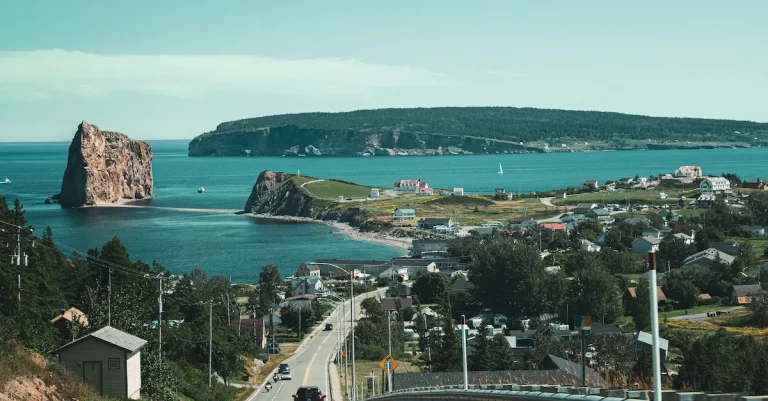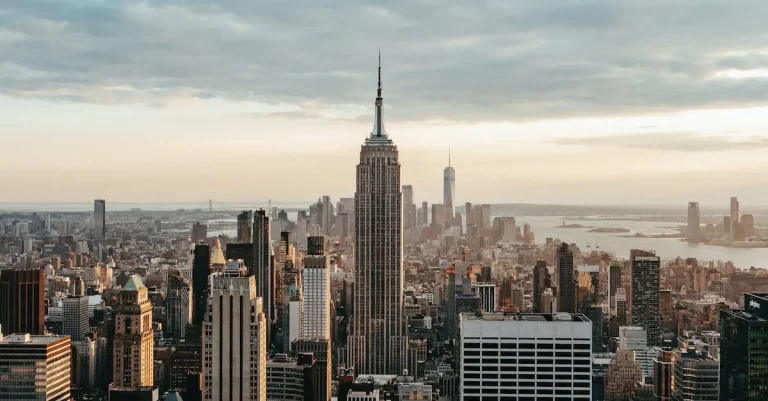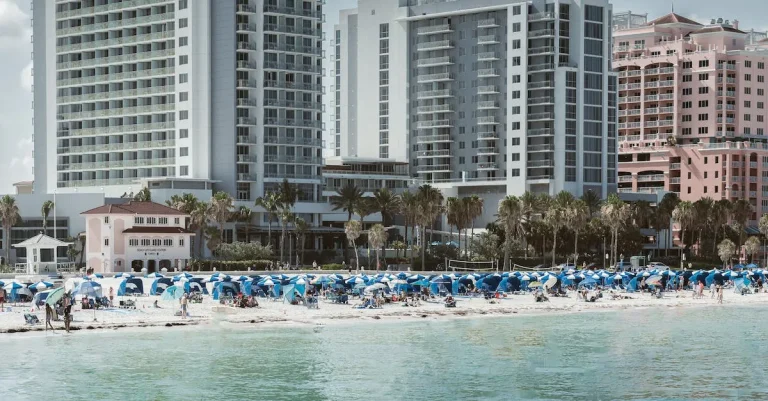10 Reasons Not To Move To Colorado Springs
With its natural beauty and exciting outdoor activities, Colorado Springs may seem like an ideal place to relocate. However, the city has some significant downsides that are worth considering before packing your bags. If you’re short on time, here’s a quick answer to your question: Colorado Springs has issues with religious influence on politics, limited career opportunities, high housing costs, inadequate public transportation, and poor air quality at certain times of the year.
In this comprehensive article, we will explore 10 major reasons why Colorado Springs may not be the right fit for you. We will look at factors including politics, jobs, cost of living, transportation, pollution, natural disasters, and more. Whether you are considering a move to the Springs for retirement, career, or any other reason, be sure to weigh the downsides outlined here before making a decision.
Heavy Influence of Conservative Politics and Religion
One of the reasons some individuals may hesitate to move to Colorado Springs is the heavy influence of conservative politics and religion in the city. Colorado Springs has long been known as a stronghold for evangelical Christian values, with a large number of churches and religious organizations present in the area.
This can create a unique cultural atmosphere that may not align with everyone’s beliefs and values.
Focus on evangelical Christian values
The focus on evangelical Christian values in Colorado Springs can be seen in various aspects of daily life. From the prevalence of religious events and gatherings to the influence on local policies and decision-making processes, religion plays a significant role in shaping the community.
While this may be appealing to some, others may feel excluded or uncomfortable in an environment that places such a strong emphasis on a specific religious ideology.
Limits on things like cannabis, abortion
Another aspect of the conservative influence in Colorado Springs is the limits placed on certain issues, such as cannabis and abortion. Colorado has legalized recreational marijuana, but Colorado Springs has stricter regulations and a limited number of dispensaries compared to other cities in the state.
Similarly, the city has a more conservative stance on abortion, which may not align with the views of individuals who support reproductive rights.
Impacts public education
The heavy influence of conservative politics and religion can also have an impact on public education in Colorado Springs. Some may argue that there is a lack of diversity in the curriculum, with a greater focus on traditional values and religious teachings.
This can be a concern for those who value a more inclusive and comprehensive education for their children.
It is important to note that these reasons may not be seen as negative for everyone. Individuals who align with conservative politics and religion may find Colorado Springs to be a welcoming and supportive community.
However, for those who hold different beliefs or prioritize certain issues, these factors may be worth considering when deciding whether or not to move to Colorado Springs.
Limited Career Opportunities
When considering a move to Colorado Springs, one important factor to consider is the limited career opportunities available in the city. While there are certainly job opportunities in Colorado Springs, it is important to note that the job market is not as diverse or robust as in other major cities.
Military and defense jobs dominate
Colorado Springs is home to several military installations, including the United States Air Force Academy and Peterson Air Force Base. As a result, a significant portion of the job market is dominated by military and defense-related positions.
While this can be a positive for individuals with a military background or those seeking jobs in these sectors, it can make it challenging for individuals in other industries to find suitable employment.
Not a tech/startup hub
Unlike cities such as San Francisco or Austin, Colorado Springs is not known for being a tech or startup hub. While there are some tech companies and startups in the area, the tech industry is not as well-developed or thriving as in other cities.
This can be a drawback for individuals in the tech industry or those looking to work in innovative and cutting-edge fields.
Slim pickings outside of a few sectors
While certain sectors, such as healthcare and tourism, do offer more job opportunities in Colorado Springs, the choices can be limited outside of these industries. This can make it challenging for individuals in fields such as finance, marketing, or creative industries to find suitable employment.
It is important to thoroughly research the job market and assess whether your desired career path aligns with the opportunities available in the city.
It is worth noting that the limited career opportunities in Colorado Springs may not be a concern for everyone. Some individuals may prioritize other factors, such as a lower cost of living or a desirable outdoor lifestyle, over career prospects.
However, for those seeking a robust job market and a wide range of career opportunities, it may be worth considering other cities that offer more diverse options.
High Cost of Living Relative to Wages
One of the main reasons why people may think twice about moving to Colorado Springs is the high cost of living relative to wages. This issue can be attributed to several factors.
Housing prices rising quickly
Firstly, housing prices in Colorado Springs have been rising quickly in recent years. According to a report by Zillow, the median home value in Colorado Springs has increased by X% over the past year. This rapid increase in housing prices can make it difficult for individuals and families to afford a home in the area.
Low inventory drives bidding wars
In addition to the rising prices, Colorado Springs also faces a low inventory of available homes for sale. This limited supply of housing options creates a competitive market, leading to bidding wars among potential buyers.
As a result, individuals may find themselves having to pay significantly more than the asking price in order to secure a home.
Salaries lag behind home values
Furthermore, salaries in Colorado Springs have not kept pace with the increasing home values. While the cost of living continues to rise, wages have not seen a proportional increase. This can make it challenging for individuals to comfortably afford the high housing costs while also meeting other financial obligations.
Overall, the combination of rising housing prices, low inventory, and lagging salaries contribute to the high cost of living in Colorado Springs relative to wages. It is important for individuals considering a move to the area to carefully evaluate their financial situation and weigh the potential challenges they may face.
Poor Public Transportation System
Colorado Springs, while known for its natural beauty and outdoor activities, unfortunately falls short when it comes to its public transportation system. Here are three reasons why its public transportation system is considered poor:
Minimal light rail and bus options
Unlike other major cities, Colorado Springs has a limited number of light rail and bus options. The city only has a single light rail line, which primarily serves commuters traveling to and from downtown.
The bus system, although available, has a limited number of routes and schedules, making it difficult for residents to rely on public transportation for their daily commute or other transportation needs.
Have to drive everywhere
In Colorado Springs, owning a car is almost a necessity due to the lack of reliable public transportation options. Many residents find themselves having to drive everywhere, even for short distances. This can be inconvenient, especially for those who prefer to use public transportation or want to reduce their carbon footprint by not relying on personal vehicles.
Traffic congestion increasing
The poor public transportation system in Colorado Springs has contributed to an increase in traffic congestion. With limited alternative transportation options, more people are forced to rely on their cars, resulting in crowded roads and longer commute times.
This can be frustrating for both residents and visitors alike, as it can lead to delays and increased stress levels.
While efforts are being made to improve the public transportation system in Colorado Springs, it is important for residents and visitors to be aware of its current limitations. Planning ahead and considering alternative transportation options, such as carpooling or biking, can help mitigate some of the challenges associated with the city’s poor public transportation system.
Air Pollution and Environmental Issues
Colorado Springs, like many cities, has its fair share of air pollution and environmental issues. Here are three reasons why you may want to consider these factors before moving to the area:
Ozone alerts common in summer
During the summer months, Colorado Springs experiences frequent ozone alerts. These alerts are issued when levels of ground-level ozone, a harmful air pollutant, reach unhealthy levels. Ozone can cause respiratory problems, especially for those with asthma or other respiratory conditions.
It’s important to be aware of these alerts and take necessary precautions to protect your health.
Wildfire smoke pollution
Colorado is no stranger to wildfires, and Colorado Springs is not immune to the effects of wildfire smoke pollution. When wildfires occur in the region, the air quality can be significantly affected, leading to poor visibility and potential health hazards.
Breathing in wildfire smoke can cause respiratory irritation and worsen existing respiratory conditions. It’s important to stay informed about current wildfire conditions and take appropriate measures to protect yourself.
Water scarcity concerns
Colorado Springs faces water scarcity concerns due to its semi-arid climate and increasing population. The city relies heavily on the Colorado River for its water supply, which is already under pressure due to drought conditions in the region.
Water conservation efforts are essential to ensure a sustainable water supply for the community. It’s important to be mindful of water usage and support local initiatives to conserve water.
For more information on air pollution and environmental issues in Colorado Springs, you can visit the Environmental Protection Agency’s website or the City of Colorado Springs Environmental Services website.
Natural Disasters Like Wildfires and Floods
Colorado Springs is a beautiful city nestled in the foothills of the Rocky Mountains, but it is not without its share of natural disasters. Residents of the area must be prepared for the possibility of wildfires, flash floods, and drought.
Here are some reasons why these natural disasters can make living in Colorado Springs challenging:
Increased wildfire risk
Colorado is known for its dry climate and abundant forests, making it prone to wildfires. In recent years, Colorado Springs has experienced several devastating wildfires that have destroyed homes and forced evacuations.
The risk of wildfires is higher in areas surrounded by vegetation and forests, and Colorado Springs is no exception. It’s important for residents to take precautions, such as creating defensible space around their homes and being aware of fire restrictions in the area.
Flash flooding events
While Colorado Springs may not be located near a major body of water, it is still at risk for flash flooding. The city’s geography, with its steep hills and canyons, can cause rainwater to quickly accumulate and create dangerous flash floods.
These events can cause significant damage to infrastructure, homes, and even pose a threat to human lives. It’s crucial for residents to be aware of the potential for flash flooding and have an emergency plan in place.
Drought and water restrictions
Colorado is no stranger to drought, and Colorado Springs has experienced its fair share of water scarcity. The city relies heavily on snowmelt and rainfall for its water supply, which can be unpredictable. During times of drought, water restrictions may be implemented to conserve water resources.
This can mean limitations on outdoor watering, car washing, and other non-essential water uses. Residents must be prepared to adapt to these restrictions and find ways to conserve water in their daily lives.
While natural disasters like wildfires and floods can be a concern for those considering a move to Colorado Springs, it’s important to note that the city has a strong emergency management system in place and residents are well-prepared to handle these situations.
By being aware of the risks and taking appropriate precautions, living in Colorado Springs can still be a great experience.
Crime Rates Higher Than National Average
When considering a move to Colorado Springs, it is important to be aware of the crime rates in the area. Unfortunately, the crime rates in Colorado Springs are higher than the national average. This means that residents may face a higher risk of becoming victims of crime compared to other cities.
Property crime more of an issue
One of the main concerns in Colorado Springs is property crime. This includes crimes such as burglary, theft, and vandalism. According to the latest statistics, property crime rates in Colorado Springs are higher than the national average.
This means that residents may be at a greater risk of having their homes or belongings stolen or damaged.
Drug use and auto theft concerns
Another issue that contributes to the high crime rates in Colorado Springs is drug use and auto theft. The city has been struggling with drug-related problems for some time, and this can lead to an increase in criminal activity.
Additionally, auto theft rates in Colorado Springs are also higher than the national average, making it more likely for residents to have their vehicles stolen.
Downtown area has safety issues
While Colorado Springs is known for its beautiful downtown area, it unfortunately has safety issues. The downtown area has been plagued by an increase in crime, including assaults and robberies. This can make it unsafe for residents and visitors, especially at night.
It is important to exercise caution when spending time in the downtown area.
Struggling Public School System
When considering a move to Colorado Springs, one of the factors to take into account is the state of its public school system. Unfortunately, the city is currently facing several challenges that may concern parents and students alike.
Below are three reasons why the public school system in Colorado Springs is struggling:
Teacher shortages
One of the major issues plaguing Colorado Springs’ public schools is the shortage of qualified teachers. This shortage can result in larger class sizes, less individualized attention for students, and limited extracurricular opportunities.
According to a recent report by the National Center for Education Statistics, Colorado has one of the highest teacher turnover rates in the country. The lack of experienced educators can negatively impact the quality of education students receive.
Overcrowded classrooms
Another challenge facing the public school system in Colorado Springs is overcrowded classrooms. With a growing population and limited resources, schools are struggling to accommodate the increasing number of students.
Overcrowded classrooms can make it difficult for teachers to effectively engage with each student and provide personalized instruction. Additionally, it can lead to a more chaotic learning environment, hindering students’ ability to focus and succeed academically.
Low per-pupil spending
Colorado Springs also faces the issue of low per-pupil spending compared to other areas. According to data from the National Center for Education Statistics, Colorado ranks below the national average in terms of per-pupil spending.
This lack of funding can limit the resources available to schools, resulting in outdated textbooks, limited access to technology, and a lack of extracurricular programs. Adequate funding is crucial for providing a well-rounded education and ensuring students have the tools they need to succeed.
While Colorado Springs may offer many attractions and amenities, it’s important to consider the state of its public school system before making a decision to move. The challenges of teacher shortages, overcrowded classrooms, and low per-pupil spending can have a significant impact on the quality of education students receive.
Parents should carefully evaluate their options and consider alternatives such as private or charter schools if they desire a higher quality education for their children.
Urban Sprawl and Generic Development
Chain restaurants dominate dining
One of the drawbacks of living in Colorado Springs is the prevalence of chain restaurants. While these establishments offer convenience and familiarity, they often lack the unique charm and flavor of locally-owned eateries.
From fast food joints to casual dining chains, the city’s culinary scene can sometimes feel monotonous and uninspired. By sticking to the same old chains, residents miss out on the opportunity to explore the diverse and vibrant food culture that can be found in other cities.
Cookie-cutter suburban feel
Another downside of urban sprawl in Colorado Springs is the proliferation of cookie-cutter suburban neighborhoods. The city has experienced rapid growth in recent years, resulting in the construction of numerous housing developments that lack character and individuality.
These neighborhoods often feature similar architectural styles and floor plans, making it difficult for residents to truly feel a sense of uniqueness and community. The homogeneity of these areas can lead to a lack of diversity and cultural vibrancy that is often found in more established and diverse urban centers.
Loss of natural spaces
As Colorado Springs expands, there is a growing concern about the loss of natural spaces. The city’s picturesque landscapes and proximity to the Rocky Mountains have long been a draw for outdoor enthusiasts.
However, as more land is developed for housing and commercial purposes, there is a risk of encroaching on these natural areas. This can lead to a loss of wildlife habitats and a decrease in outdoor recreational opportunities.
Preserving the natural beauty of Colorado Springs should be a priority to ensure the city remains an attractive destination for nature lovers.
Limited Arts and Culture Scene
Colorado Springs, while known for its natural beauty and outdoor activities, falls short when it comes to a vibrant arts and culture scene.
Not a lot of museums or events
Unlike cities like New York or Los Angeles, Colorado Springs does not have a wide variety of museums and cultural institutions. While there are a few notable museums such as the Colorado Springs Fine Arts Center and the Colorado Springs Pioneers Museum, the options are limited compared to larger cities.
Art enthusiasts may find themselves craving more diverse exhibitions and events.
Conservative values limit diversity
Colorado Springs is known for its conservative values, which can limit the diversity and range of artistic expression in the city. This can result in a narrower range of perspectives and artistic styles being showcased.
While there is still creative talent in the city, those looking for a more progressive and diverse arts scene may feel that Colorado Springs falls short in this regard.
Have to go to Denver for more options
To find a more extensive arts and culture scene, residents of Colorado Springs often have to travel to Denver, which is about an hour’s drive away. Denver offers a wider range of museums, art galleries, theaters, and cultural events.
While it’s great to have Denver nearby, it can be inconvenient for those who prefer to have these options closer to home.
Conclusion
While the outdoor opportunities around Colorado Springs are incredible, the city has some definite disadvantages to weigh. From political and religious constraints, to air pollution, high costs, and other issues covered here, there are many factors that make the city less than ideal for some people. Carefully consider all the pros and cons before deciding if relocating to the Springs is right for you.








